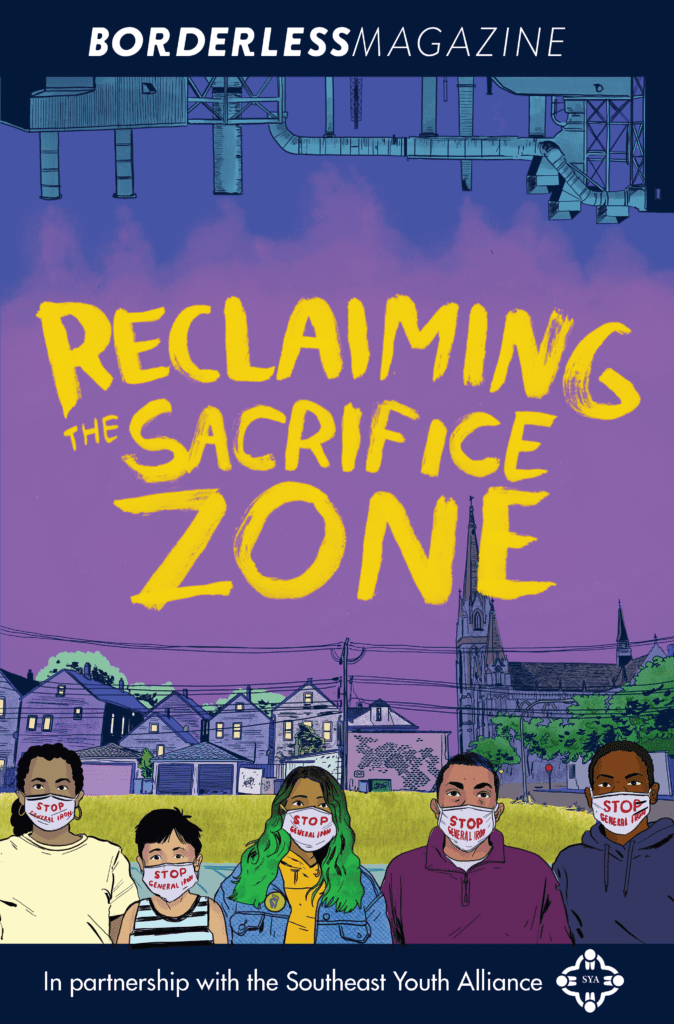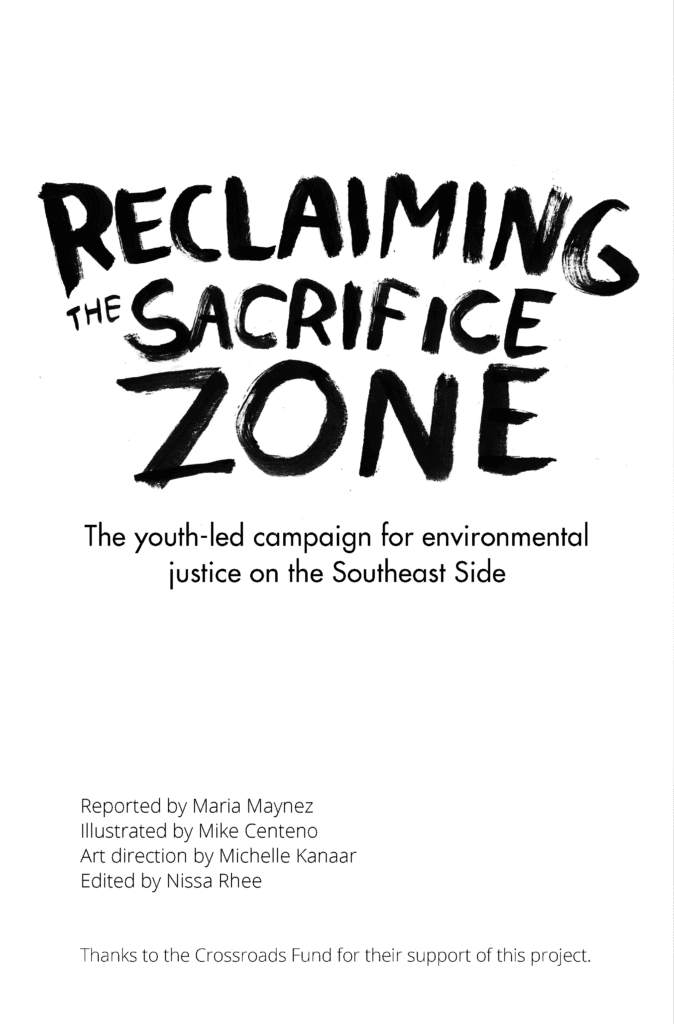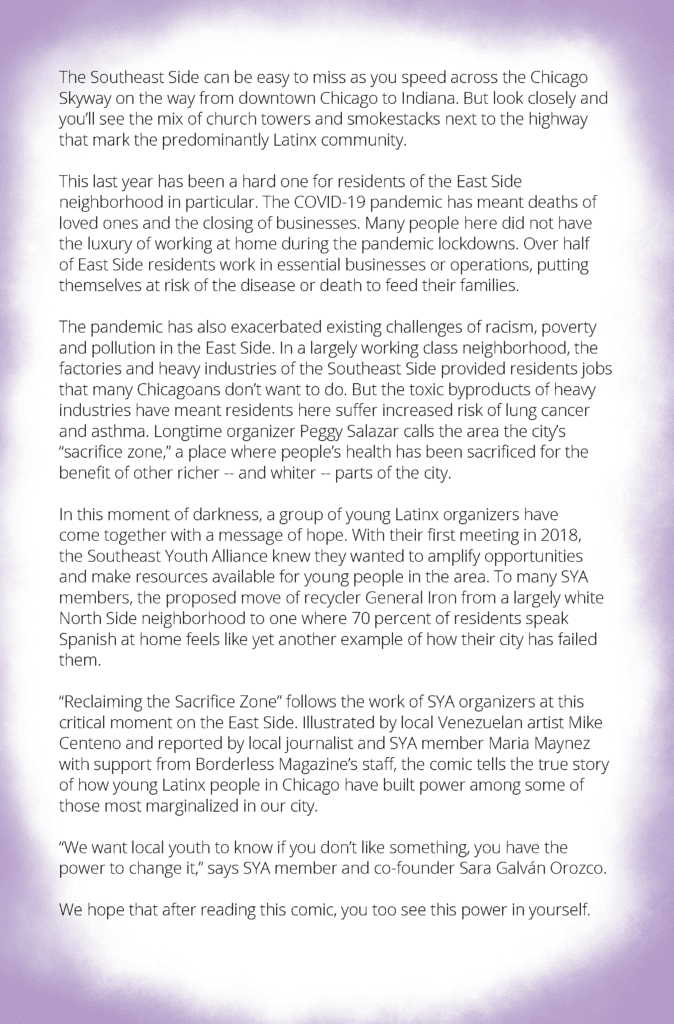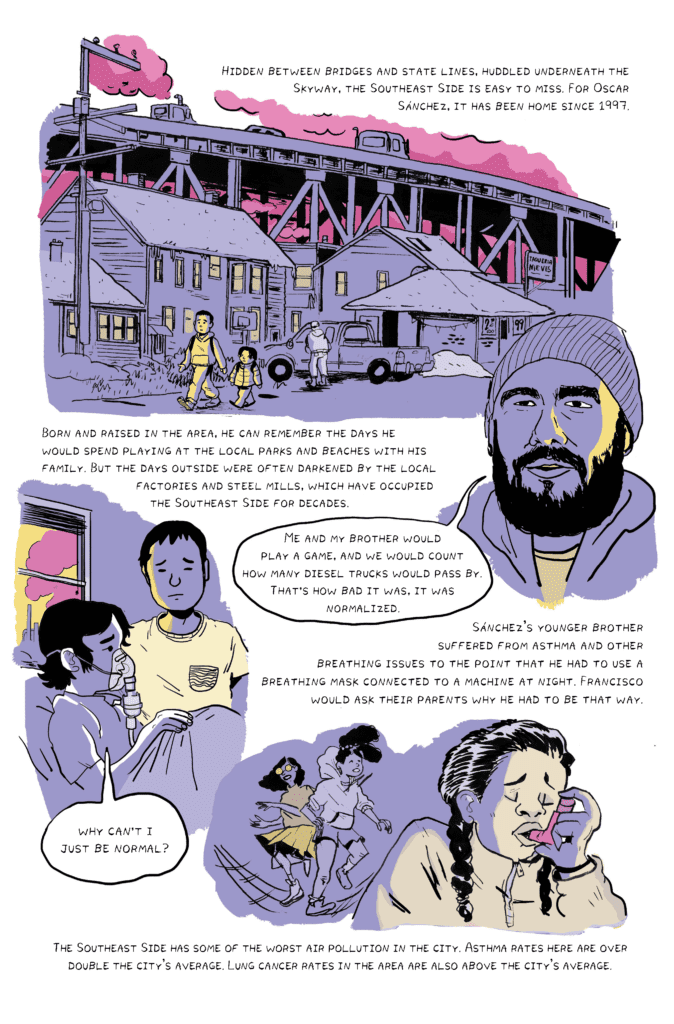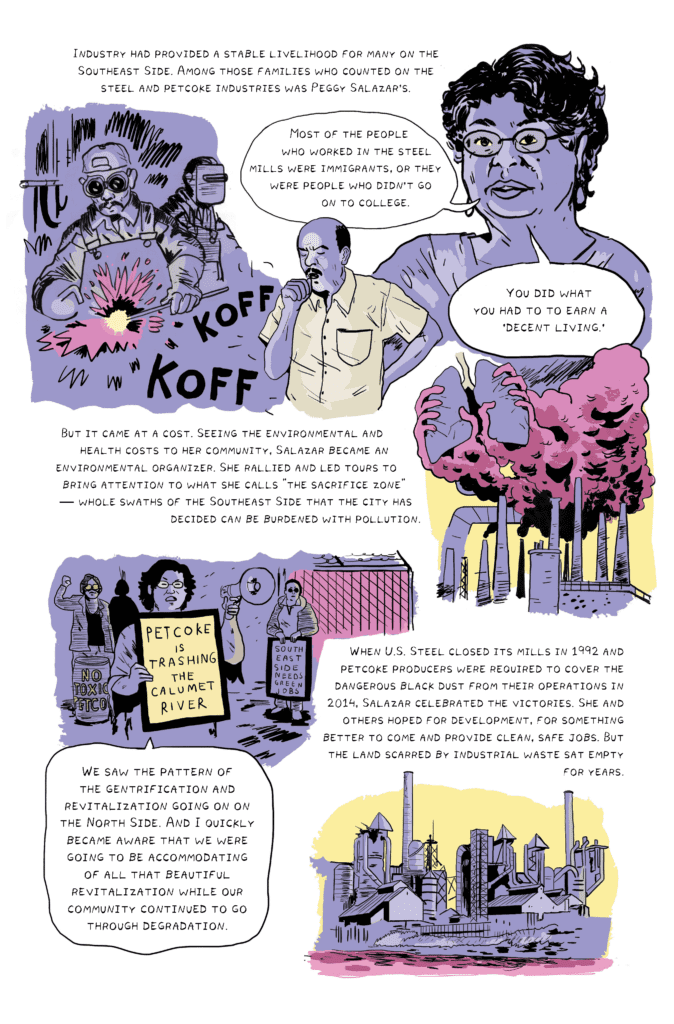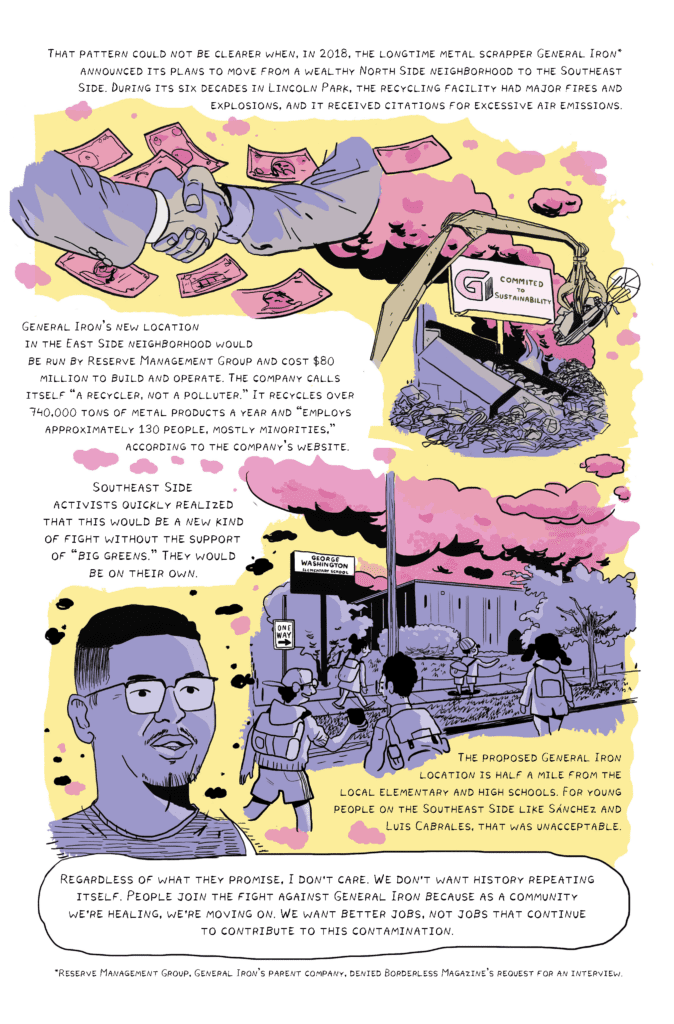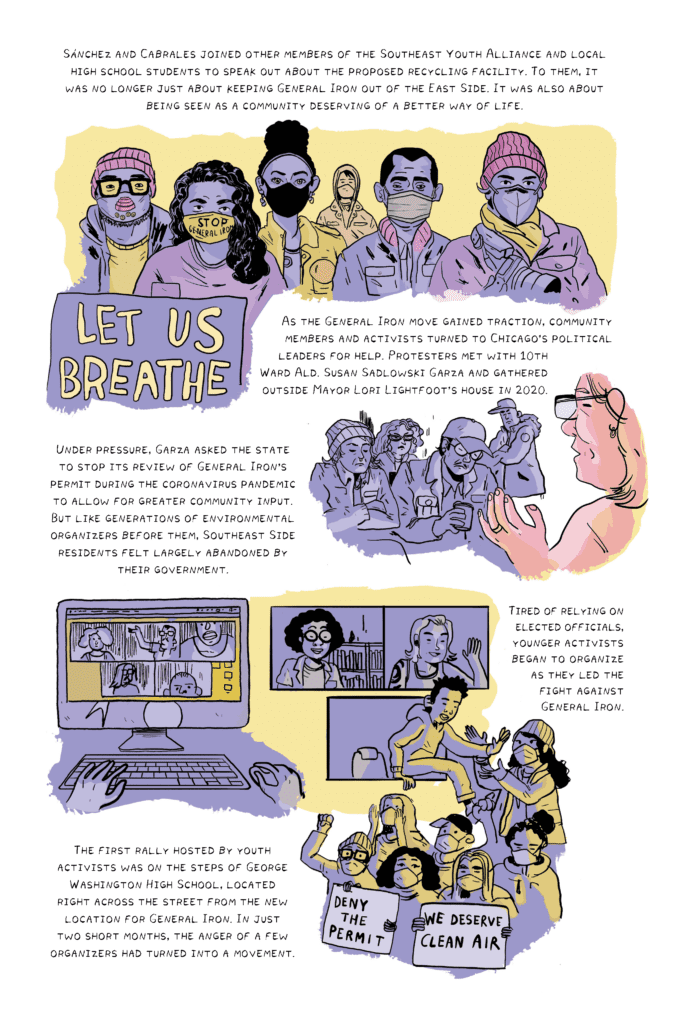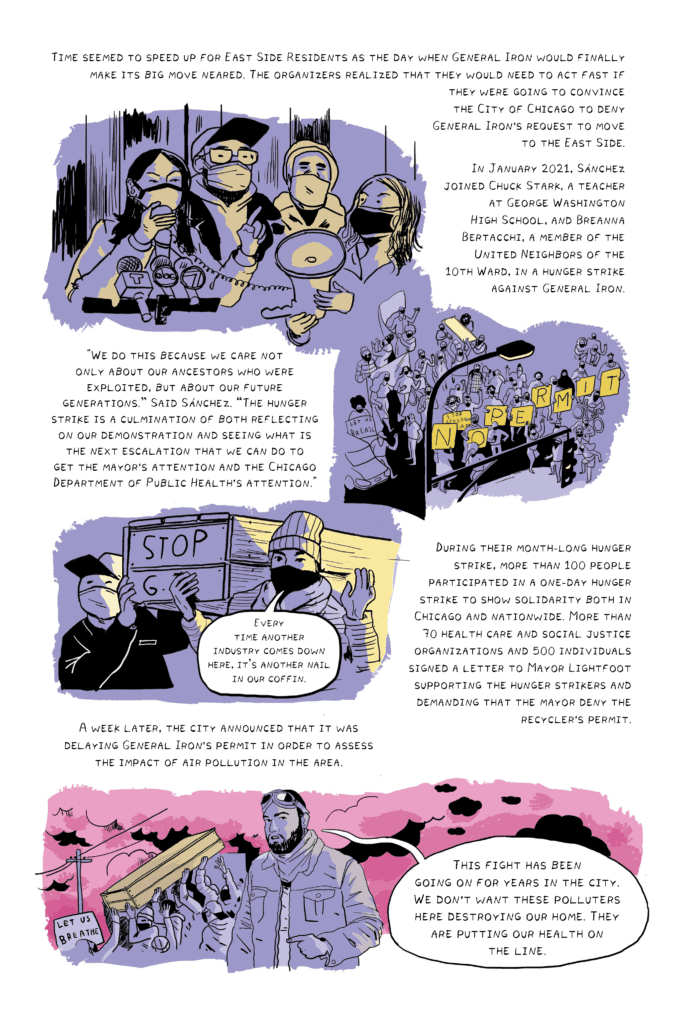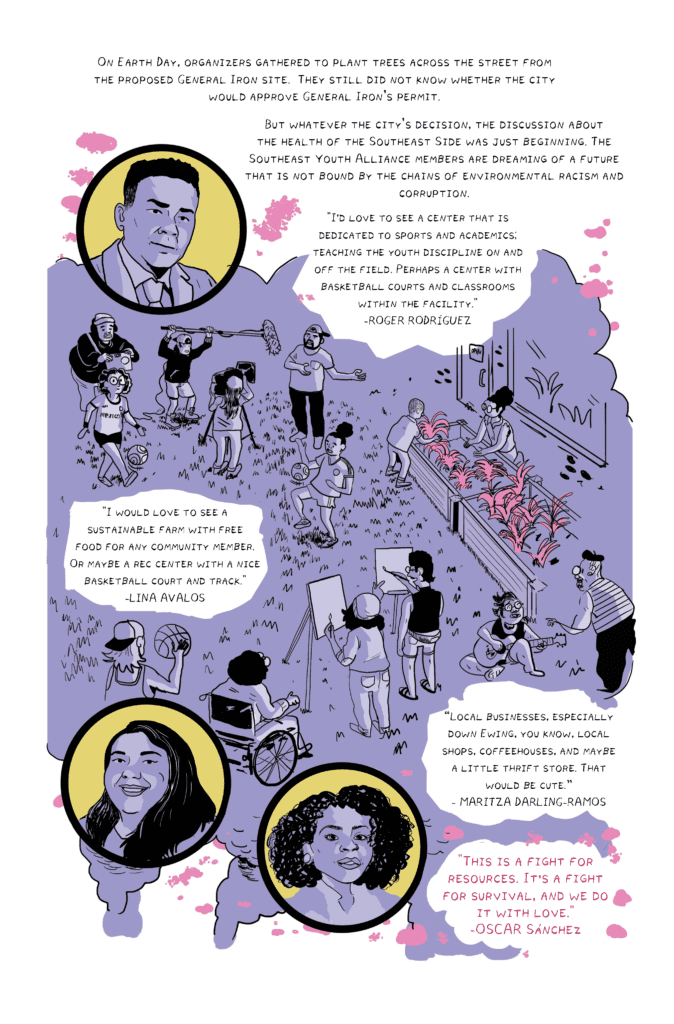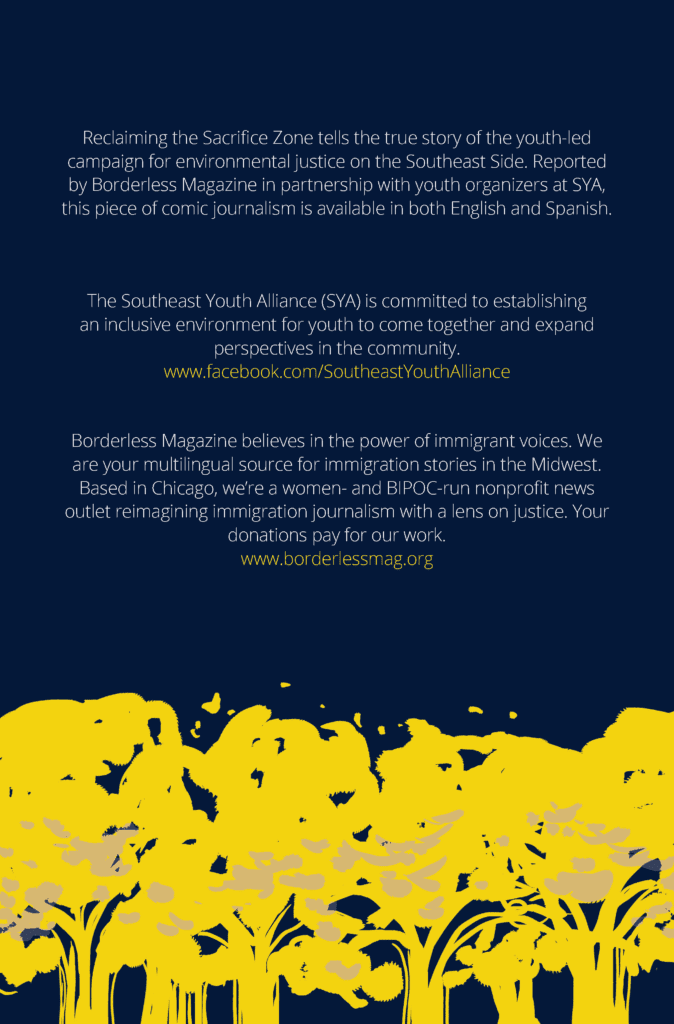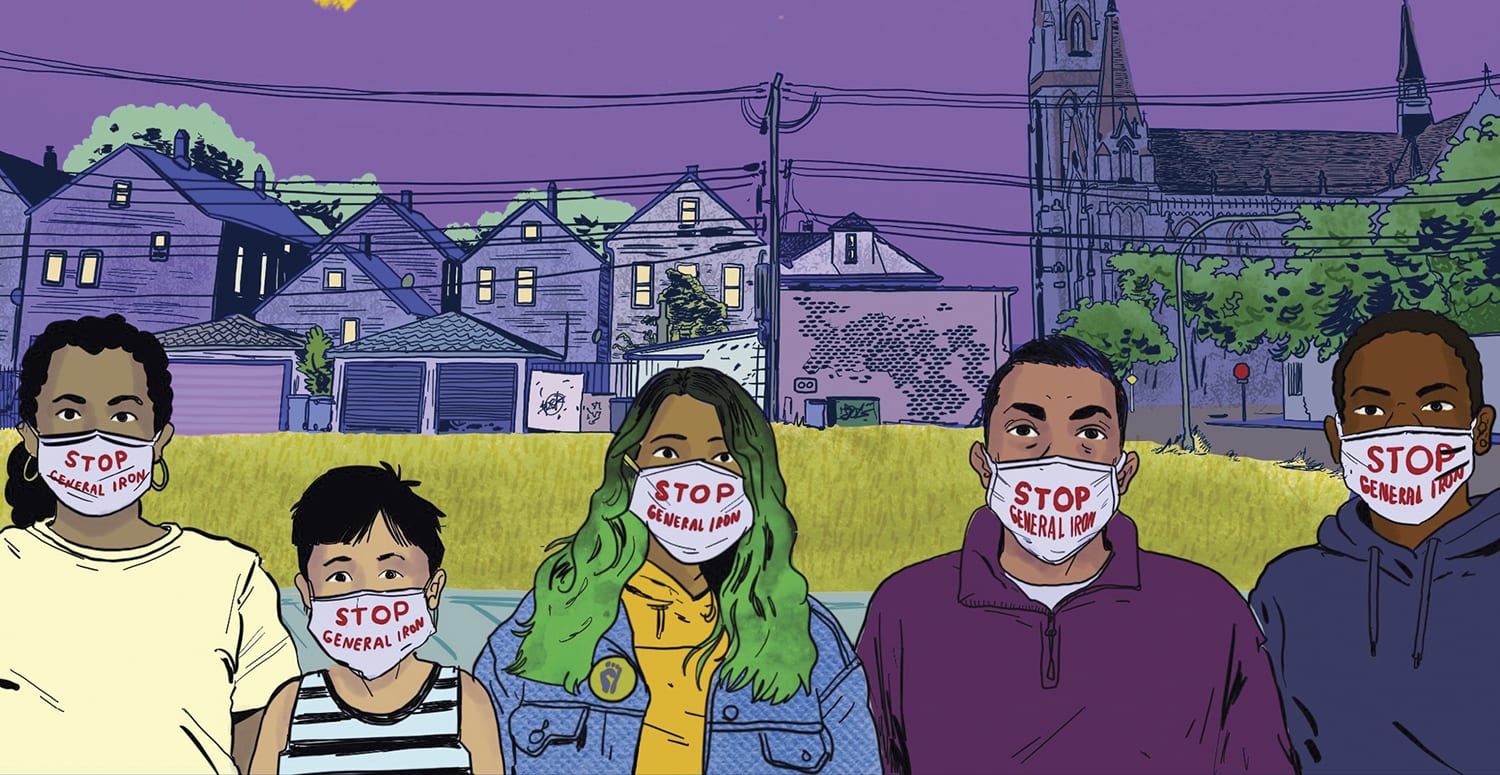
Campaña juvenil por la justicia medioambiental en la zona sureste.
Actualización 2/18/22: El Departamento de Salud Pública de Chicago anunciado que ha denegado a RMG/General Iron el permiso de explotación de una planta de reciclaje en el lado sureste.
Es fácil pasar por alto el Southeast Side al cruzar a toda velocidad la autopista Chicago Skyway de camino del centro de Chicago a Indiana. Pero fíjate bien y verás la mezcla de torres de iglesias y chimeneas junto a la autopista que marcan la comunidad predominantemente latina.
Este último año ha sido duro para los residentes del barrio de East Side en particular. La pandemia de COVID-19 ha supuesto la muerte de seres queridos y el cierre de negocios. Mucha gente de aquí no pudo permitirse el lujo de trabajar en casa durante los cierres por pandemia. Más de la mitad de los residentes del East Side trabajan en empresas o explotaciones esenciales, exponiéndose a la enfermedad o a la muerte para alimentar a sus familias.
La pandemia también ha exacerbado los problemas existentes de racismo, pobreza y contaminación en el East Side. En un barrio mayoritariamente obrero, las fábricas e industrias pesadas del Southeast Side proporcionaban a sus residentes trabajos que muchos habitantes de Chicago no quieren hacer. Pero los subproductos tóxicos de las industrias pesadas han hecho que los residentes de aquí sufran mayor riesgo de cáncer de pulmón y asma. Peggy Salazar, organizadora desde hace mucho tiempo, llama a esta zona la "zona de sacrificio" de la ciudad, un lugar donde se ha sacrificado la salud de la gente en beneficio de otras partes más ricas -y más blancas- de la ciudad.
En este momento de oscuridad, un grupo de jóvenes organizadores Latinx se han unido con un mensaje de esperanza. Con su primera reunión en 2018, la Southeast Youth Alliance sabía que quería amplificar las oportunidades y poner recursos a disposición de los jóvenes de la zona. Para muchos miembros de la SYA, la propuesta de traslado de la recicladora General Iron de un vecindario mayoritariamente blanco del North Side a uno donde El 70% de los residentes habla español en casa parece un ejemplo más de cómo su ciudad les ha fallado.
"Reclaiming the Sacrifice Zone" sigue el trabajo de los organizadores de SYA en este momento crítico en el East Side. Ilustrado por el artista local venezolano Mike Centeno y relatado por la periodista local y miembro de SYA María Maynez con el apoyo del personal de Borderless Magazine, el cómic cuenta la verdadera historia de cómo los jóvenes Latinx de Chicago han construido poder entre algunos de los más marginados de nuestra ciudad.
"Queremos que los jóvenes locales sepan que si algo no les gusta, tienen el poder de cambiarlo", afirma Sara Galván Orozco, miembro y cofundadora de SYA.
Esperamos que después de leer este cómic, tú también veas este poder en ti mismo.
Este cómic forma parte de nuestra serie Mi barrio me respalda [Mi vecindario me cubre las espaldas]una serie bilingüe de un mes de duración realizada por, para y con latinos de Chicago.
